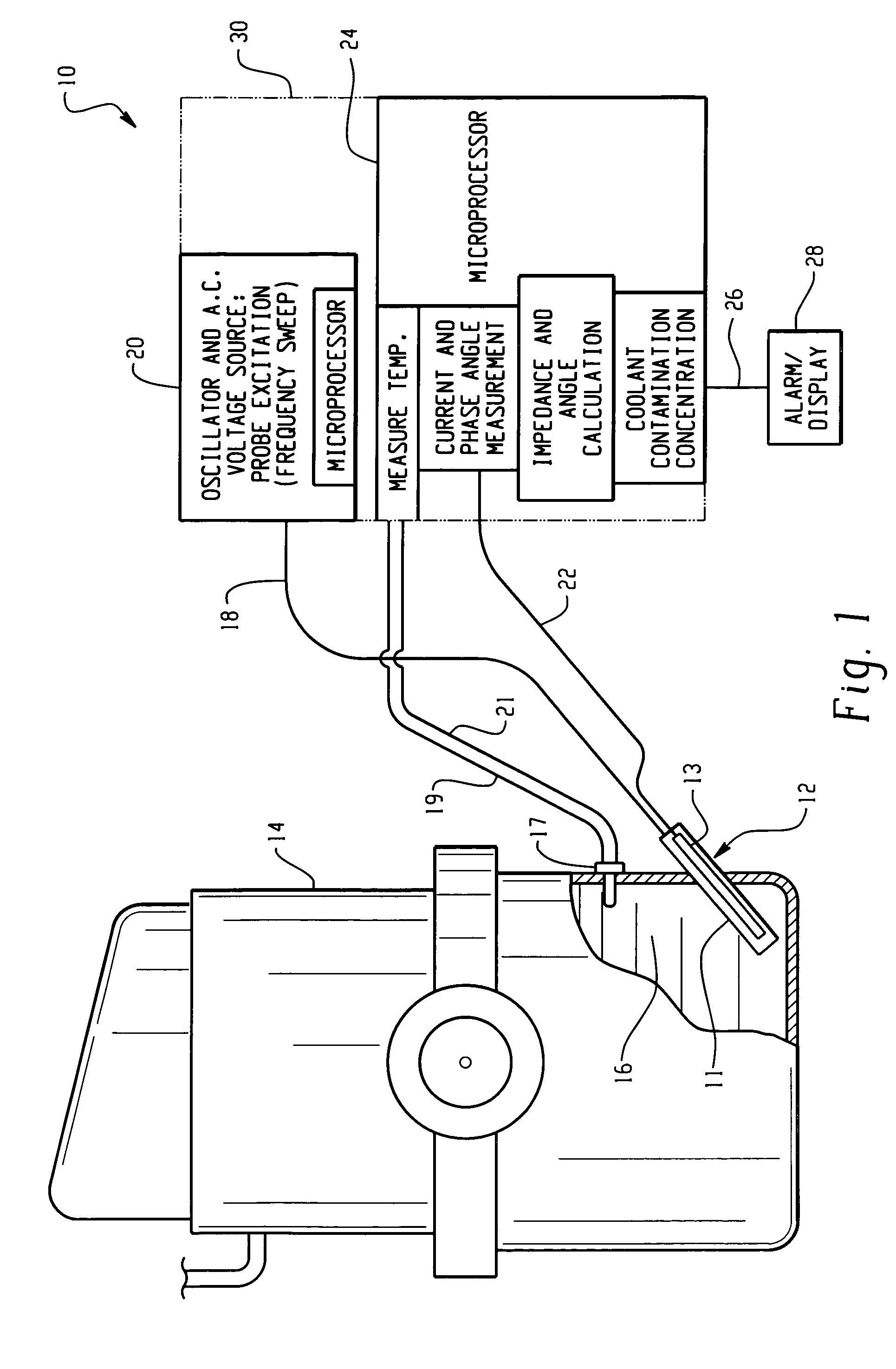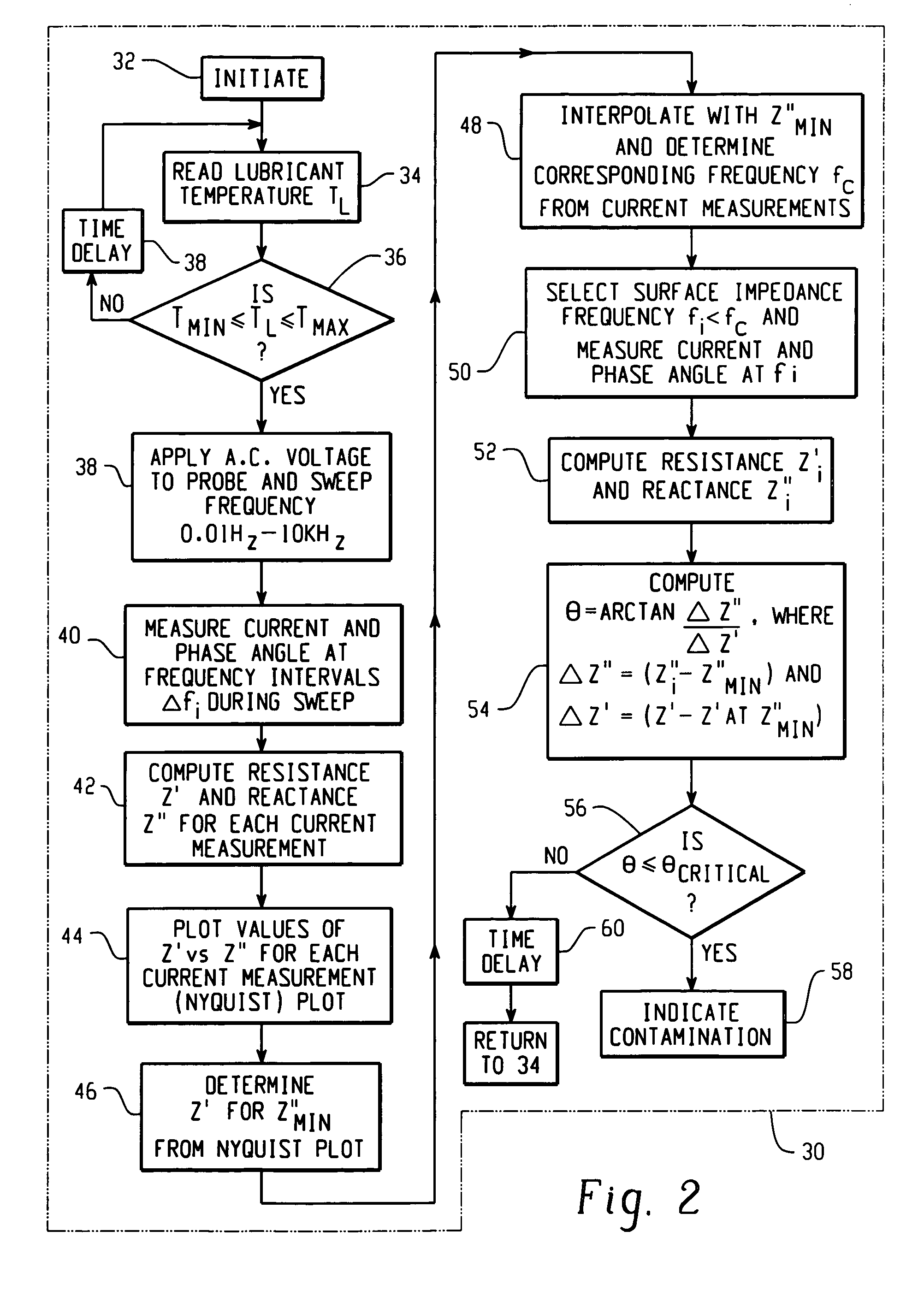Detection of coolant contamination in lubricating fluids
a technology of lubricating fluid and coolant, applied in the direction of material impedance, fluid resistance measurement, instruments, etc., can solve the problems of difficult rationalization of fluid behavior, limited tracking of such effects,
- Summary
- Abstract
- Description
- Claims
- Application Information
AI Technical Summary
Benefits of technology
Problems solved by technology
Method used
Image
Examples
Embodiment Construction
[0010]Referring to FIG. 1, the invention is indicated generally at 10 and includes a probe 12 having a pair of spaced electrodes 11, 13, which probe is inserted into the crankcase of an engine 14 and immersed in the engine lubricant indicated at 16. The probe 12 has connections for its electrodes extending externally of the engine. The probe 12 has a first electrode 11 connected to a controller 30 along line 18; and, a second probe electrode 13 is connected along line 22 to the controller. Controller 30 includes a source of low voltage alternating current indicated at 20; and, in the presently preferred practice of the invention controller 30 generates an excitation voltage in the range of about 0.01 Hz to 10 kHz. A voltage source 20 is connected along line 18 to the probe electrode 11.
[0011]Controller 30 also includes a microprocessor 24 and performs measurement of the current magnitude and the current phase angle and performs the impedance angle calculations as will be hereinafter...
PUM
| Property | Measurement | Unit |
|---|---|---|
| angle | aaaaa | aaaaa |
| frequency | aaaaa | aaaaa |
| voltage | aaaaa | aaaaa |
Abstract
Description
Claims
Application Information
 Login to View More
Login to View More - R&D
- Intellectual Property
- Life Sciences
- Materials
- Tech Scout
- Unparalleled Data Quality
- Higher Quality Content
- 60% Fewer Hallucinations
Browse by: Latest US Patents, China's latest patents, Technical Efficacy Thesaurus, Application Domain, Technology Topic, Popular Technical Reports.
© 2025 PatSnap. All rights reserved.Legal|Privacy policy|Modern Slavery Act Transparency Statement|Sitemap|About US| Contact US: help@patsnap.com



